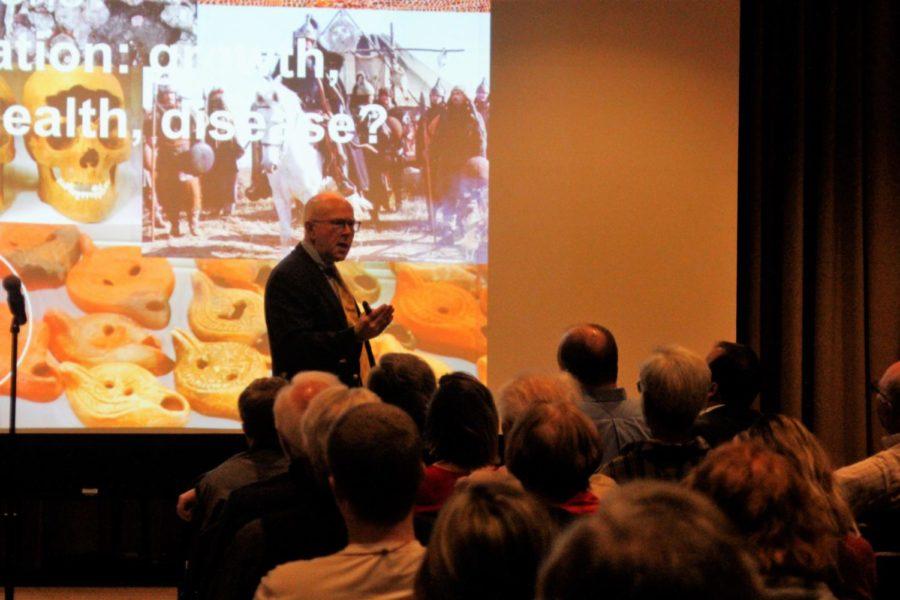Harvard professor presents on the fall of the Roman Empire
Megan Petzold/ Iowa State Daily
Micheal McCormick, Francis Goelet Professor of Medieval History at Harvard University, came to Iowa State to talk about different ways that might have caused the fall of the Roman Empire on October 22nd.
October 22, 2018
Michael McCormick, Francis Goelet Professor of Medieval History at Harvard University, visited Iowa State on Monday night to discuss his studies on the fall of the Roman Empire with the science of the human past.
More specifically, McCormick talked about new ways to study the human past through life sciences, computer science and environmental science by using whole genome sequencing, ice cores and more.
“[People] tend to think the human past as some kind of great cathedral,” McCormick said. “[The] human past is a giant, messy, scraggly construction site.”
Now, revolutionary changes are transforming everything about human life, the environment, the economy and how our human knowledge is changing.
One of the big historical problems in life is the fall of the Roman Empire, not only because of its prominence in the past, but also because no one has seemed to figure it out yet. That is what McCormick and some of his colleagues are trying to figure out.
McCormick and his colleagues pose questions about the Roman economy, distribution of wealth, population growth and decline, migration, environmental changes and how the Romans responded. McCormick looked to answer these questions not by the usual historical way, but by using life science, computer science and environmental science to get his answers.
“These are questions in many respects that we were unable to ask just a few years ago,” McCormick said. “We could ask, but we could not answer them.”
There were two main focuses of this study. The first focus was on the migration and mobility in the ancient Mediterranean and where all the people came from. Their second primary focus was on ancient pathogens.
They found that Romans had extraordinary urban wealth, defenses, cities and were very resilient in overcoming the collapse of the empire.
McCormick and his colleagues used many different tools to get their findings. Archaeological findings, isotopes and ice cores were just a few things that were used to uncover clues to answer all of McCormick’s pressing questions.
Isotopes are various forms of atoms that have slightly different atomic masses and can be used to tell us the origins of people and textiles, among other things. Whole genome sequencing is a new process that allows people to analyze the entire genome at a single time.
McCormick used whole genome sequencing and mitochondrial DNA to see how the pandemics affected the Roman economy and population. He found that Yersinia Pestis, or the Bubonic Plague, was the cause of the Justinianic Pandemic that terrorized the the Eastern Roman Empire, specifically its capital Constantinople and cities around the Mediterranean Sea.
Ice cores were used to tell them about the environment and how it changed over the time of the Roman Empire. They can tell about metal production in the Roman Empire as well as the climate, wind direction, temperature precipitation and more. The findings told of excellent warmth, moisture and stability.
However, three volcanic explosions took place that blocked solar radiation and caused volcanic winters, crop failures and economic difficulties alike that came from the volcanic emissions, which contributed to the decline.
“The fall of the Roman Empire will look different in 2028,” McCormick said. “And it certainly looks very different tonight from the way it looked about 10 or 15 years ago.”







